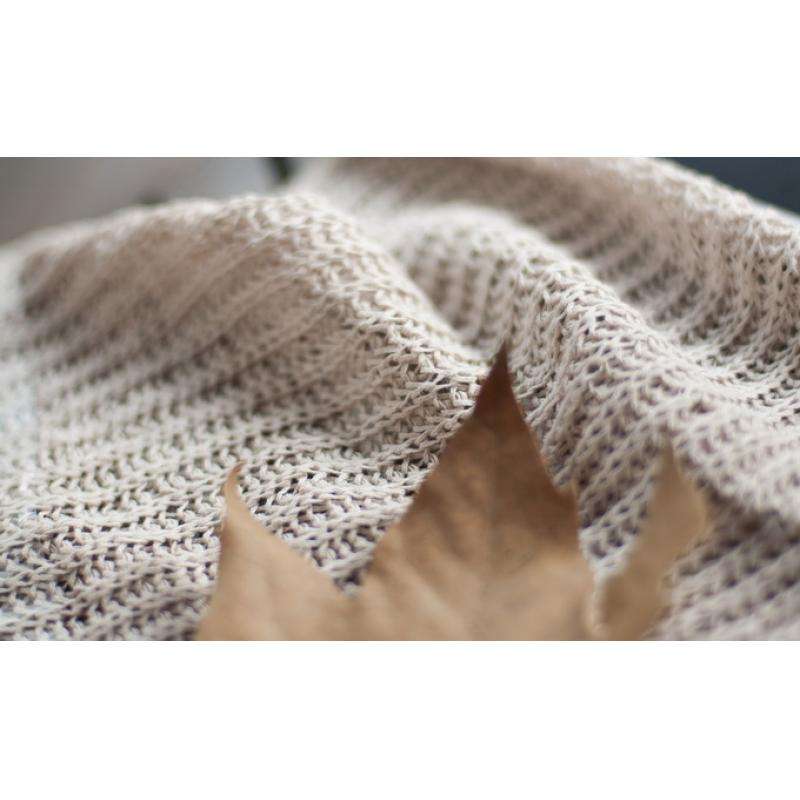Classification and Development Trends of Fancy Yarn
Fancy yarn, with its unique artistic language, showcases different style characteristics in a wide range of textiles. The combination of multiple materials not only adds various technical content to the design of fancy yarn in textiles, but also creates a wide range of development space for textile end products with different functions. This textile flower has already shone brightly in the domestic consumer market.
What is fancy yarn?
Fancy yarn is actually a general term for fancy yarn and colored yarn, which refers to the yarn obtained by processing fibers or yarns with special materials, special equipment or special processes during spinning and yarn production, and has a special structure and appearance effect.
Classification of fancy yarns
The connotation of "flower" in fancy yarn is relatively rich, specifically manifested in the following five aspects:
1. Fancy structure
Specifically manifested in the appearance molding effect, such as ice island yarn, big belly yarn, loop yarn, braided yarn, knot yarn, variable twist yarn, velvet yarn, ribbon yarn, core spun yarn, chenille and various multi form combinations. This can be achieved through the type of processing equipment or process programming.
2. Material components
Fancy yarn can use all textile fibers, and various fiber materials can be used independently or mixed together. According to the fabric and its use, various fibers can be ingeniously blended to fully utilize their inherent characteristics.
3. Color
An important manifestation of fancy yarn is also reflected in color. If two or more fibers with different colors or properties are used to spin various colored yarns and multi colored composite yarns.

4. Post processing
The use of various methods for precision machining and deep development of products is a major characteristic of colored yarns. There are various post-processing techniques for fancy yarns, including fuzzing, segmental dyeing, printing and dyeing, tie dyeing, fabric needle punching, wrinkling, etc. The same or different fancy yarns are combined again to form a multi-level composite fancy effect.
5. Processing method
The same equipment or material, using different threading or processing methods to obtain yarn types that can only be completed by higher-level equipment or multi-step operations.
The current development trend of domestic fancy yarn
1. Diversification of materials
The main materials used include wool, acrylic fiber, viscose fiber, nylon filament, nylon, polyester filament, etc., as well as natural fibers such as silk, spun silk, cotton, and linen, which are widely used in the development and use of environmentally friendly materials such as mold and UV protection.
2. Composite of products
Fancy yarn products tend to be composite, with multiple colors and shapes combined, in line with the trend of leisure and natural times and diverse characteristic needs.
Article source: Fancy Thread Manufacturer
-
05-27
The reason why fabrics containing spandex are prone to yellowing
Spandex is a commonly used fiber variety in our daily lives, characterized by good elasticity, low fineness, high elastic modulus (cracking elongation can reach 400-800), and low specific gravity. Spa
-
04-24
Colored non dyed nylon with synthetic fiber raw material
The current conventional fiber coloring mostly uses yarn dyeing method, which has long process, high loss, high cost, and the product has color difference and low color wash fastness. Yarn is prone to
-
03-26
What are the characteristics of non dyed spandex?
Non dyed spandex has also been widely used in recent years. Non dyed spandex fiber can be blended with fibers such as nylon, polyester, acrylic, cotton, wool, etc., which can give fabrics excellent el
-
02-24
The influence of yarn structure on fabrics
The basic characteristics of yarn include its appearance and shape, twisting characteristics, fiber transfer and distribution characteristics in the yarn, as well as the surface fuzz and internal loos
